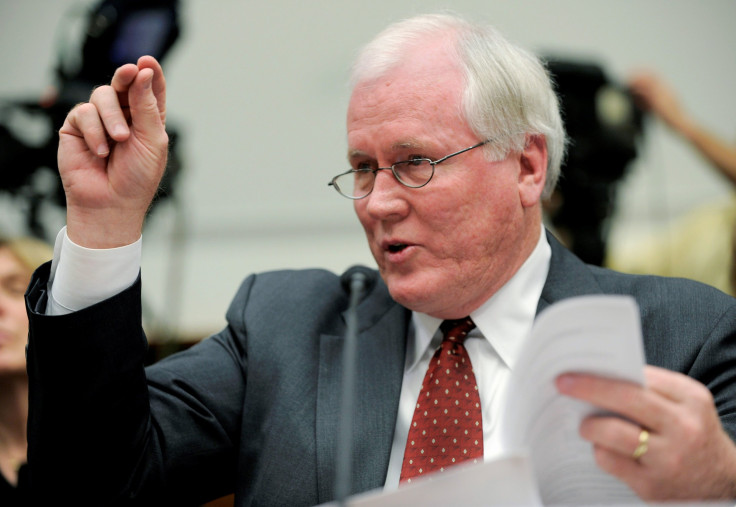Who Was Really In Charge Of AIG? Former CEO Edward Liddy Testifies in Bailout Trial

Edward Liddy, the former CEO of the American International Group, testified Friday that he deferred to U.S. government overseers who selected him to run the failing insurance giant. Liddy's testimony in the ongoing trial to decide whether the federal government's bailout cheated shareholders of billions of dollars focused on just who was in charge of AIG during the financial crisis.
Maurice “Hank” Greenberg’s Starr International Co. is suing the government over claims the 2008 bailout cost the insurer’s shareholders at least $25 billion and that the government illegally took 80 percent of the company's stock in consideration for an $85 billion bailout loan. The government has countered that the AIG board voluntarily accepted the terms of the deal to avoid bankruptcy. The company became a symbol of controversial Wall Street practices during the financial meltdown and was criticized for paying millions of dollars in bonuses to executives after it was bailed out.
During questioning, David Boies, Greenberg's lawyer, asked Liddy if he made any major decisions without first running it by Federal Reserve or U.S. Treasury Department officials. “I could have, Mr. Boies. I just chose not to,” Liddy replied, according to Bloomberg. Documents introduced into evidence by Boies this week showed that government officials reviewed press releases and selected AIG board members.
Liddy said he was recruited to AIG by Christopher Cole, who headed Goldman Sachs’ investment banking unit at the time. Then-Treasury Secretary Henry Paulson was a former Goldman Sachs CEO. Another former Goldman Sachs executive, Ken Wilson, who was serving as an adviser to Paulson, urged Liddy to take the position. Liddy's successor, Robert Willumstad, was forced to resign as a condition of the government bailout.
When asked about the the details of the loan, such as a provision for a trust to hold the government’s stock in AIG and a requirement for equity, Liddy said that “the mechanics of this were very complicated” and that he depended on advice from lawyers. Liddy said he worked to lengthen the initial two-year term of the loan and to lower an alleged 14 percent interest rate. “It was like walking on eggshells,” he testified regarding efforts to reduce the rate. “It was a negotiated process.”
The rate was eventually lowered under a restructuring. Liddy described his strategy as “what can we do to make this better” to make sure “the Federal Reserve will get repaid.”
During previous testimony, Timothy Geithner, who was president of the New York Federal Reserve at the time of the bailout, blamed AIG’s management for the company’s financial losses. “The scale of AIG’s financial needs, the potential losses relative to those facing other firms at the time, were a result, by definition, substantially of the management decisions by the company,” Geithner said.
The $85 billion federal loan eventually ballooned to $182 billion in government aid, which AIG repaid. The company has returned to profitability, with its stock rising more than 45 percent over the past two years, according to the Associated Press.
© Copyright IBTimes 2024. All rights reserved.






















